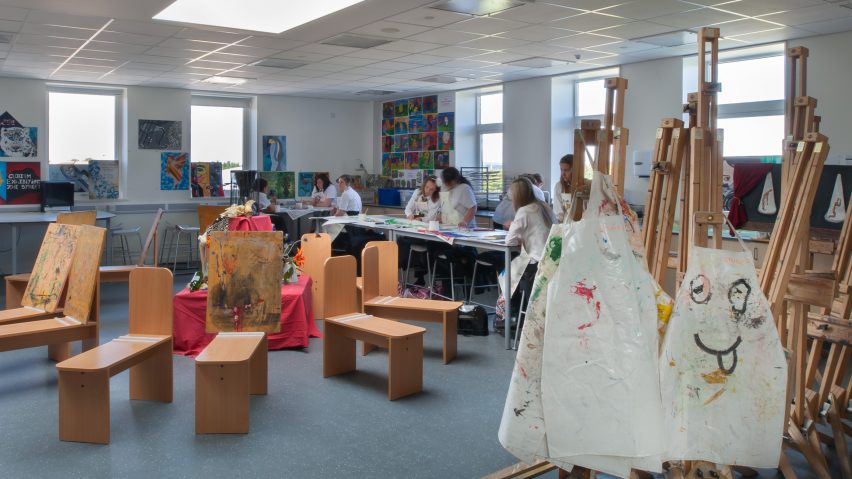The UK government is urging schools to promote art and design subjects, after a report found that schools with more creative pupils achieve significantly higher grades.
Released today, the New Schools Network (NSN) Arts Report reveals that schools with more arts GSCEs per pupil achieve above-average results. This was proven to be the case for schools in deprived areas, as well as those in affluent neighbourhoods.
It shows that offering a broad mix of subjects, in addition to those included in the controversial English Baccalaureate (EBacc) system – which favours more traditional subjects like science and history – leads to better performance.
At a launch event for the report earlier today, digital and culture minister Matt Hancock said the government is doing all it can to support creative subjects, but it is up to schools to deliver a varied curriculum.
"This should not be an argument about a battle between the arts and other subjects, but instead a battle for stronger, better, well-rounded education," he said.
"Ultimately, the best schools in the country do this. They combine excellent cultural education to complement excellence in other academic subjects," Hancock continued.
"This report backs up that analysis. It looks at the data and says, if you want to drive up standards across the board, push your arts and music offer."
Hancock and schools minister Nick Gibb co-authored the foreword to the NSN report.
The report also shows that, contrary to popular belief, student interest in art and design hasn't gone down since the introduction of the EBacc – which many feared would lead to the decline of the UK's world-leading creative industries.
But the report also claims that schools need to do more to boost their arts provision, and that arts organisations could work more closely with children to ensure these subjects continue to thrive.
"This report puts to rest the argument that the EBacc has stifled cultural education in England's schools, reaffirming the government's argument that children can enjoy a successful education in the arts while also excelling in the EBacc," said Gibb.
"The best schools in the country combine a high-quality cultural education with excellence in core academic subjects and we are committed to ensuring that England's students continue to have access to both."
The Creative Industries Federation, whose founder John Sorrell has previously criticised the introduction of the EBacc, welcomed the report, but said that NSN was wrong to exclude design and technology (D&T) from the list of creative subjects.
An earlier report had found that the number of students taking design and technology courses fell 10 percent in 2016.
"We regret this omission because we think D&T offers young people the chance to learn the creative and technical skills that we know from the government's own official list are in short supply in areas such as visual effects and animation," said Harriet Finney, deputy chief executive and policy director of the Creative Industries Federation.
Finney has also urged the government to prevent its education watchdog Ofsted issuing "outstanding" grades to any school that doesn't offer a good creative education.
"We must make it easier for all schools – including the most challenged, working with the most deprived pupils – to offer creative subjects," she said. "This means, among other things, addressing the fall in the number of teachers and taught hours dedicated to the arts."
The NSN report responds to ongoing concern over the decline in the number of young people studying art and design, prompted by statements from numerous industry figures.
In October 2016, the National Society for Education in Art and Design warned that provision for art and design is being "significantly eroded" in schools.
There are also fears that Brexit will lead to a decline in overseas students coming to the UK to study design, leading to a skills crisis in the sector. The Council for Higher Education in Art & Design warned of a "brain drain" as overseas students and teachers desert UK higher education.
Photograph of Cornelius Vermuyden School, designed by Nicholas Hare Architects, is by Jim Stephenson.

